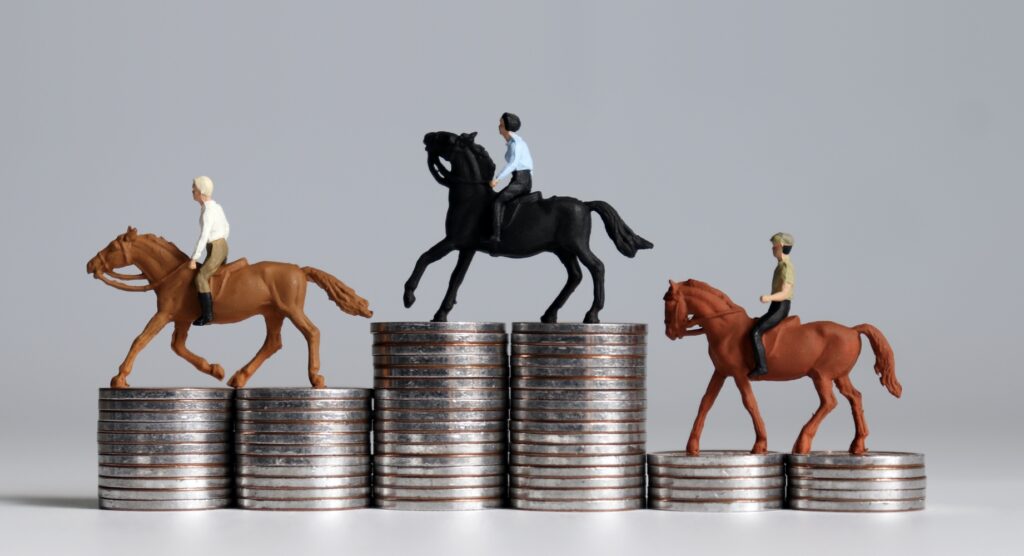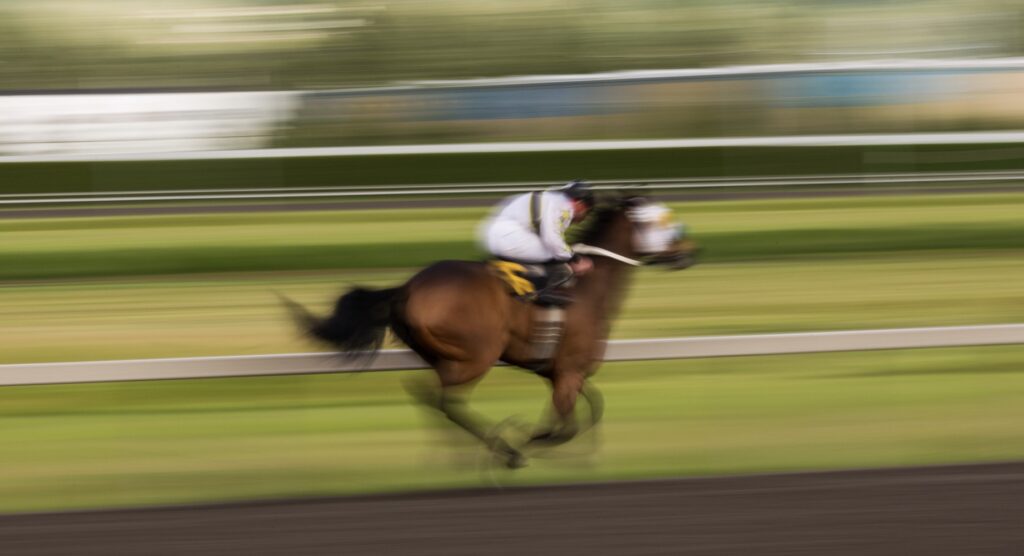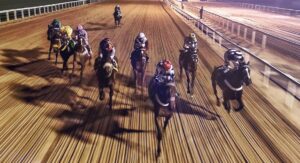How Important Are Market Moves?
Go into any betting shop around the country and you are sure to find the regular espousing his racing ‘knowledge’ to anyone who is courteous to listen. ‘It’s getting backed’ he triumphantly informs his comrades, seeing the odds of the horse contract further.
But what does this mean? Does a horse that has received strong market support still value just before the off? Can a horse whose odds go out before the race starts still win? In this article we look at the concept of market movers, identifying how influential they are in the outcome of a race.
How Is a Market Formed?
In a perfect betting market, the odds would be dictated by supply and demand. If there is strong demand for a horse (i.e. lots of individuals want to back the runner), then its odds should decrease. Likewise, if there is no interest in a horse from the betting public, then its odds will increase to a point where the price becomes attractive to punters and it starts attracting business.
Races are often now priced up the night before the action gets underway. At this time it is the responsibility of the individual bookmaker to compile their own odds and manage their liabilities based upon the bets their customers strike, but in reality the vast majority of firms simply have algorithms that react to the odds movements that take place on the betting exchanges.
Normally around ten minutes before the ‘off’ time of the race, the on course market takes over. All bookmakers relay the odds that are available with the bookmakers who actually operate on the track and therefore there is uniformity in the prices across the board.
Market movers are generally referred to as steamers and drifters:
- Steamers – Steamers refer to horses whose odds contract from their opening show. Bookmakers are contracting their prices to try and control their liabilities.
- Drifters – Drifters are horses whose odds get bigger from their opening position. Bookmakers often push out the odds of a horse to try and make them a more enticing proposition to back, in order to balance their books.
Stay aware of the latest odds at our most recommended betting sites.

Factors to be Considered With Market Moves
There are several factors that need to be considered when looking at market moves, including strength of the market, timing, connections, the horse’s previous odds patterns, bookmaker manipulation and race class. Let’s discuss each factor in more detail.
Strength Of The Market
Strength of the Market
The depth and relative strength of the market plays a role in deciding how influential a market move may be.
Good racing on a Saturday is likely to attract larger crowds and betting interest throughout the course of the day and therefore the odds can be slightly more robust, requiring relatively more/less money on a horse before the compilers move its price.
A cold, wet Wednesday night at Kempton is only likely to attract a handful of punters and here the markets can be very temperamental, as one decent bet on the exchanges, in a shop or in the ring can move a horse’s odds significantly.
Timing
Timing
As mentioned, most of the bookmakers are dictated to by the betting exchanges, where there is little liquidity in the mornings. Therefore, small amounts of money can shift the odds disproportionately at this time of the day.
The majority of action is seen on the more popular betting exchanges around ten minutes before the off when the board prices are available (the on course odds) and market moves here, when the horse can be seen in the flesh are generally more significant as they require larger sums in a comparatively stronger market.
Connections
Connections
The connections of a horse can have a large part to play in how significant a market move can be. Some yards are renowned for operating shrewdly, whilst others rarely hit the target when the money is down.
Certain handlers runners have next to no chance when their odds drift, while for other stables, any negative odds movements have little bearing on the horse’s performance. Take, for example, Ralph Beckett and Roy Brotherton:
Runners 13.00 or bigger
- Roy Brotherton (1.5%) 21/1387 for loss of £-958. A/E 0.57
- Ralph Beckett 89/1710 (5.2%) for £199. A/E 1.53
Favourite
- Roy Brotherton 46/119 (39%) for £55 LSP. A/E 1.47
- Ralph Beckett 223/685 (34%) for loss of £-37. A/E 1.03
The figures show the trainers have a different modus operandi. While the data does not show market moves, it shows how the handlers do when their runners are relatively fancied or unfancied. Roy Brotherton’s horses who are 13.00 or bigger have just a 1.5% success rate for a hefty loss, whilst Ralph Beckett’s runners have won at 5.2%, producing a healthy profit.
When the two trainer’s runners are favourite, Roy Brotherton has a higher win %, profit and A/E. Beckett does not do poorly, but Brotherton excels. What conclusions can be drawn here? That money for a Brotherton runner is significant, as is a horse that drifts, whilst punters should not be put off by a Ralph Beckett horse if it is not popular in the market.
In addition to trainers, owners need to be considered. A wealthy footballer such as Michael Owen may have several thousand pounds on one of his own horses for the sake of it, which is sure to move the market. This does not necessarily mean the support is ‘smart’ money, rather it is proportional to Owen’s own situation.
Horse’s Previous Odds Patterns
Horse’s Previous Odds Patterns
There are certain horses who are referred to as ‘morning glories’. They light up the home gallops with a sensational bit of work, but then fail to reproduce that ability on the racecourse. These individuals are normally the type who see market support on every run, as those involved with the horse know what it is truly capable of.
Another horse may have won five races through its career, but started at odds of at least 15.00 in all of those victories. Punters should not necessarily be deterred by weakness in the market, as the horse has shown in its previous runs that it can oblige at generous odds.
Perhaps the horse doesn’t show much at home, and as such connections are unsure when it will come good on the racecourse. As a result there will be little market confidence, prompting a drift.
Bookmaker Manipulation
Bookmaker Manipulation
There is no shadow of a doubt that large bookmakers manipulate on course betting markets. Representatives from each firm who attend the race meetings and strike bets where they see fit – to affect the odds on horses to control their liabilities.
For example, on a Wednesday of low grade action, if a customer of a specific bookmaker had placed a fourfold accumulator and the first 3 selections had won, then controlling the SP of the final runner could have a substantial effect on the pay out (especially when Best Odds Guaranteed is offered online).
Let’s assume that the stake was £40 and the first 3 bets all won at 5.00, 5.00 and 10.00, resulting in £10,000 (£40 x 5 x 5 x 10) running onto the last selection, a horse called ‘On The Bridle’ which was 7.00 when the bet was placed. If the odds were to remain the same, then the potential liability would be:
6/1 (7) x £10,000 = £70,000
The on course bookmakers have no prior liabilities throughout the day and therefore can give their odds independently. They open up with On The Bridle at 9.00 and see no market support for the runner so push it out to 11.00. With five minutes to the off-time, and with the customer assured Best Odds Guaranteed on his bet, the pay out looks like:
10/1 (11) x £10,000 = £110,000
This is potentially a £40,000 difference in the return due the drift on the last selection in the accumulator. To ensure that the horse does not go off at 11.00, a bookie representative would be very likely to visit the several of the on course bookmakers and place bets.
At a low grade, lowly attended event, it would only take a £1500-£3000 spread across the independents to see the horse’s odds chopped significantly, as with little action on any of the other horses, the on course bookmakers would not want to assume any more liability on one runner. Assuming that the money had contracted the odds into an SP of 6.00, this act has served two purposes for the bookmaker:
- It has eliminated the potential addition liability of £40,000 from the return to the punter.
- It has enabled the bookmaker in question to reduce its liability in the bet at more generous odds (i.e. they are backing a horse at 11.00 that the punter has backed at 7.00)
Of course if the horse loses, then the bookmaker in question is out of pocket due to their hedges, but it is a small price to pay.
Race Class
Race Class
Money talks. Especially in the lower grade races. Invariably, as you go down the ladder of racing, from class 1 to class 7, the impact of market moves becomes more influential. This is because the prize money is lower, races are less competitive due to poor horses running against each other. The likelihood of every horse ‘trying’ in a class 4 £6k handicap is much higher than in a class 6 2k race.
Assessing market moves can be tricky. The betting exchanges are increasingly becoming the best barometer of whether a horse is really fancied or not.
Everyone from bookmakers to professional punters to the recreational gambler now uses the betting exchanges and generally that is where the signs of a steamer or drifter are most apparent. Why? Because individuals can bet on horses to win and to lose on betting exchanges.
Therefore, if there are consistently individuals wanting to bet against a horse, its odds are likely to drift dramatically. This is not always reflected to the same extent on the fixed odds market, as the bookmakers work to much bigger margins, keeping the odds lower to make sure they get out as much as possible from the punters.
This is never more evident than when all-weather racing takes place during the winter. With unerring regularity, horses (in particular favourites) will be ‘backed’ on course, with their odds decreasing closer to the off. However, just one look on the betting exchanges shows that the horses are not being backed at all and are sometimes even drifting.
This is a simple case of the bookmakers taking advantage of the low attended, low grade meeting and manipulating the markets to ensure big over rounds and even bigger profits. The golden rule when a horse appears to be getting backed, is to check the betting exchanges. They give the reality of the situation.





